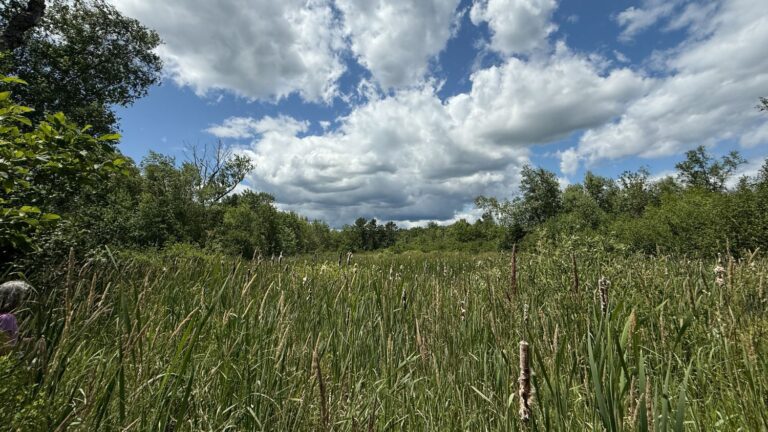As Maine moves into Phase 1B of its COVID-19 vaccination rollout, federal dose allocations are becoming more stable, and mass vaccination sites in Bangor and Scarborough this week began immunizing hundreds of Mainers.
About 9.7 percent of the state’s population — nearly 177,000 Mainers — had received their first shot as of Feb. 5, according to the Maine Center for Disease Control and Prevention. Of those, 46,400 had received their final dose.
Nationwide, 28 million people have received their first dose of a vaccine, according to the U.S. CDC. That’s about 8.5 percent of the population.
After weeks of uncertainty about how many doses would be allocated, Dr. Nirav Shah, director of the Maine CDC, on Jan. 28 said he learned from the federal government that the state would receive 20,375 first doses — an increase of 16 percent from the prior week. That kind of stability is “extremely useful,” Shah said, because it allows the state to plan ahead.
Maine got another 5 percent increase in doses for the week of Feb. 8. With the vaccine supply projected to stay about the same over the next few weeks, Jeanne Lambrew, commissioner of the Department of Health and Human Services, said she expects to vaccinate two-thirds of Mainers over the age of 70 by the first week in March.
Phase 1B, which the Maine CDC says likely will last through April, includes people 65 and older, front-line workers and people with high-risk medical conditions.
Women made up roughly two-thirds of the Mainers who received their first dose. Shah said this could be related to the high percentage of women in Maine’s healthcare workforce, which was the focus of Phase 1A.
Maine closed out January with the smallest daily increase in cases since mid-November, the Bangor Daily News reported. On Jan. 31, Maine recorded 156 new cases of COVID-19 and no new deaths. The CDC reported one of its highest COVID-19 death counts on Feb. 2, at 23. But it also reported that 21 of those deaths had occurred earlier and were attributed to COVID-19 after a review of death records. In total, 632 Mainers have died from COVID-19 and more than 1,400 have been hospitalized.
More than a thousand Mainers this week received their shots at the Cross Insurance Center in Bangor and the former racetrack Scarborough Downs as part of mass vaccination efforts led by the Northern Light Hospital system and MaineHealth, respectively. At full capacity, each site expects to immunize 2,000 people a day. A third site is under consideration in a York County shopping center and could open as early as this month.
Maine’s seven-day positivity rate — a measure of how much a state is testing and therefore whether its number of confirmed cases is reliable — has come down to around 3 percent after hovering around 6 percent in early January. A positivity rate below 5 percent indicates that a state is testing widely enough.
In light of these better numbers, Gov. Janet Mills lifted the 9 p.m. curfew for businesses beginning Feb. 1. The numbers are encouraging, Mills said, but the pandemic is “far from over.”
New strains of the COVID-19 virus have been detected in the U.S. but new vaccine studies offer hope. A vaccine from the American biotech company Novavax is 89 percent effective and appears to protect against some variant strains of the virus, the company reported on Jan. 28. And a Johnson & Johnson vaccine is reportedly 66 percent effective. Both have yet to be approved by the U.S. Food and Drug Administration for emergency use authorization.
Nationally, COVID-19 cases dropped 21 percent as people have changed their behavior, according to Kaiser Health News. Health officials told KHN it was too early to see the impact of the vaccine rollout.
“Instead, they said, the factors involved are more likely behavior-driven, with people settling back home after the holidays, or reacting to news of hospital beds running out in places like Los Angeles,” KHN reported. “Others are finding the resolve to wear masks and physically distance with the prospect of a vaccine becoming more immediate.”
MMC nurses face union vote
As nurses at the Maine Medical Center face a vote to unionize in the coming weeks, hospital president Jeff Sanders released a statement Wednesday urging employees to vote no.
National Nurses United and the Maine State Nurses Association filed a petition last month to represent the hospital nurses. To form the union, the majority of nurses must vote in support.
WMTW reported on Jan. 26 that multiple nurses were told they would be required to attend a training session about their legal rights. The consulting firm hired to run this training, Reliant Labor Consultants, promotes “avoiding a union” and “fighting a union” as services on its website, according to WMTW. The hospital responded that nurses were asked to attend the training, not required.
In a four-minute video sent to media, Sanders praised employees for their work during the COVID-19 pandemic and encouraged them to educate themselves about what it would mean to join a union.
“I strongly believe we have a much brighter future working together without the union in between,” he said.
Aroostook hotel offers shelter to homeless
To help shelter Mainers who have become homeless during the pandemic, Aroostook County Action Program (ACAP) opened a shelter in a Presque Isle area hotel that will house up to 10 people.
The shelter, opened in partnership with MaineHousing, serves as an overflow site for the Sister Mary O’Donnell Homeless Shelter. Residents must test negative for COVID-19 before staying.
Since Jan. 25, the first night it opened, 16 people have stayed overnight at the shelter, typically for about three days each, organizers said. Four people will stay there permanently as ACAP works to transition them directly into housing.
Homelessness data in Aroostook County is difficult to track, ACAP executive director and CEO Jason Parent said, but his staff has seen an anecdotal increase. Program Coordinator Heidi Rackliffe, who is directing the shelter, told Parent in a video interview that “couch surfing” with friends or family is very common in the county during normal times but has become a health risk during COVID-19. And agencies and resources have closed their doors to the public, making it more difficult for people to get help and contributing to a rise in homelessness.
Parent told The Maine Monitor in November that he was worried about demand for food and heat assistance increasing in the colder months. Asked last week if the winter has been as bad as he feared, Parent responded, “I must say, thankfully it has not.”
“The winter has been considerably milder and food, for the most part, has been accessible,” he said. “The current challenge is with rental assistance, given we are in a gap month between programs, but we are hopeful with the new program coming online and moratorium on evictions that we will weather this storm.”
In case you missed it
An investigation of a whistleblower complaint found that federal officials over the past decade spent millions of dollars earmarked for public health emergencies on “unrelated salaries, administrative expenses and even the cost of removing office furniture,” the Washington Post reported on Jan. 27.
As vaccination efforts ramp up, so does lobbying from advocacy groups representing older people and essential workers trying to get to the front of the line, according to the Pew Charitable Trusts Stateline.
Flu cases in Maine are down 85 percent this season from an average of 547 cases over the past four years to 80 cases since October, according to the Bangor Daily News. Measures such as social distancing and facemasks aimed at reducing the spread of COVID-19 may also contribute to the reduction in flu cases.
Maine made national news on Jan. 23 for shifting vaccine doses away from a federal pharmacy program with Walgreens and CVS that officials said was moving too slowly.
“We are not messing around with this,” Shah said. “We’ve got doses waiting to be administered and people waiting to receive them. If we see a mismatch there, we are going to continue moving things around in that fashion.”







